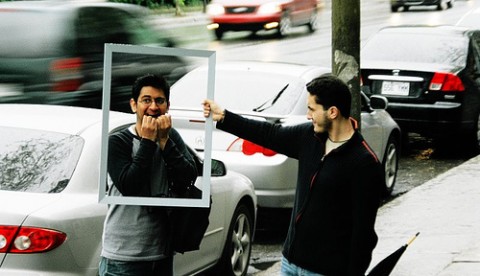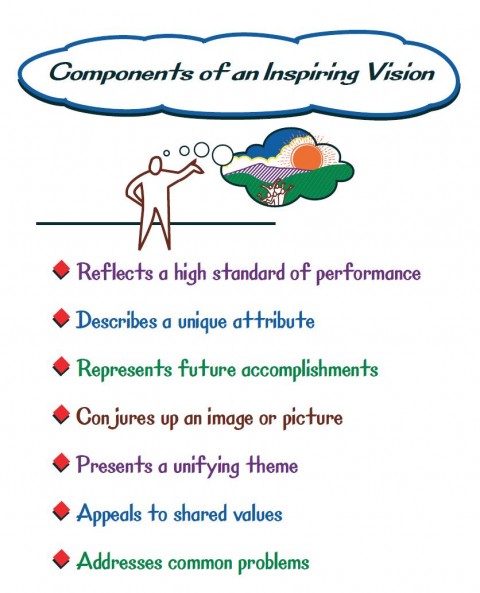Posted in Facilitative Leadership
April 15, 2010

|Photo by John D. McDonald|http://www.flickr.com/photos/psychoactive/2943294866|
Science has confirmed what many of us feel, that we are each more than one person. We are minds and bodies, left brains and right brains, controlled and automatic responders. This last division is due in part to the fact that we each have more than one brain. Our old reptilian brain is what we can depend on to keep us safe from physical harm most of the time. Our newest brain is what gives birth to the wonders of critical thought and creativity. The amazement I feel about the evolution of our higher thinking is dampened somewhat by my understanding and experience that my multiple brains are not often well coordinated. I walk into a meeting on the one hand (or brain) excited to facilitate, while on the other I am anxious, my more primitive wiring believing there’s a saber toothed tiger in the corner). Welcome to what Seth Godin calls “the lizard” inside.
Read More
April 8, 2010

|Photo by xb3|http://www.flickr.com/photos/bofh/150722915|
In a post of a few weeks ago I explored the different dimensions of social space we might be called to attend to as leaders and change agents in creating environments for people to collaborate. I suggested that these dimensions exist in dynamic tension and together form a holistic picture of how we can leverage the potential of groups by respecting the values of autonomy, community, and divinity. In recently reading a book by Tim Kasser and Tom Crompton, I was reminded that how we frame these dimensions matters in terms of what ends we seek and ultimately serve.
Read More
March 9, 2010

Sharing an inspiring vision is one of the seven practices of Facilitative Leadership. Here at the Interaction Institute for Social Change we are fond of saying that “a leader must share an inspiring vision in order to inspire a shared vision.” If you are reading this blog you probably have a vision. You are interested in social change, you want to believe that indeed another world is possible – and you have a role in making it happen. You have a vision of the world you want to see. Read More
February 26, 2010
Thanks to our colleague, Susan DeGenring of Alchemy Learning, for bringing this a blessing about leadership to our attention. It is the work of John O’Donohue, the late Irish teacher and poet, from his last book, To Bless the Space Between Us. Please read and share your thoughts, as I share mine below: Read More
December 31, 2009
One of my favorite poetry finds this year comes from Judy Sorum Brown, whose piece “Fire” ties in nicely with a theme that has been developing for me over the past twelve months. In addition to Judy’s work, I am grateful for the writings of Larry Dressler, which have helped me to embrace the metaphor of “fire tending” (not firefighting) as part of the work we do as leaders, facilitators, consultants, teachers, and perhaps as parents.
Larry’s book Standing in the Fire points out that when we work with groups of people we are to some extent always playing with fire. Fire can burn, of course, but it can also purify and renew, it can serve as fuel, it can warm us, and it can make us uncomfortable enough to get moving. The key is first not to be afraid of the heat. From there it all comes down to the choices we make about how to build and feed the flames in light of what it is we are trying to collectively accomplish.
Read More
December 11, 2009
Yesterday, I was honored to lead a workshop on Facilitative Leadership for 500 women at the 5th Annual Massachusetts Conference for Women. Hosted by the MA Commission on the Status of Women, this mega-gathering attracted over 5,000 diverse women from corporate, government, non-profit, and social change sectors. The vibe was electric and eclectic – with a mix of executives, teachers, job-seekers, entrepreneurs, students, philanthropists, stay-at-home moms and many others. It was a day of focus on issues “that matter most to women, including personal finance, business, entrepreneurship, health and work/life balance”.
My 60 minute session, “The Practice of Facilitative Leadership”, was what we at IISC would call an “experience” of our flagship, 3-day, course. Up front, we acknowledged that, in this shifting socio-historical global context — anyone who claims to lead is merely improvising her way through unprecedented waters along with the rest of us.
Read More
August 28, 2009
On Wednesday, August 26, 2009, a great public servant and leader died. Massachusetts Senator Edward “Teddy” Kennedy’s legacy of service, championing the under-served and working class of our country, had come to an end in one form, now to transition to a legacy of another sort. It was the second day of the Facilitative Leadership course I was co-training, and of course, that morning, we paused to mourn, reflect, reminisce and examine our study of leadership in the brilliant, shining light of his life long leadership practice.
Later in the day, I came across this blog piece published by the Harvard Business Review, entitled, “How Ted Kennedy Got Things Done,” and couldn’t help but notice how much the observations of his distinguished service track so well with several of the attributes and principles of Facilitative Leadership: Read More
August 28, 2009
By Melinda Weekes
On Wednesday, August 26, 2009, a great public servant and leader died. Massachusetts Senator Edward “Teddy” Kennedy’s legacy of service, championing the under-served and working class of our country, had come to an end in one form, now to transition to a legacy of another sort. It was the second day of the Facilitative Leadership course I was co-training, and of course, that morning, we paused to mourn, reflect, reminisce and examine our study of leadership in the brilliant, shining light of his life long leadership practice.
Later in the day, I came across this blog piece published by the Harvard Business Review, entitled, “How Ted Kennedy Got Things Done,” and couldn’t help but notice how much the observations of his distinguished service track so well with several of the attributes and principles of Facilitative Leadership: Read More
July 6, 2009
My son, David, recently wrote an article for the Providence Phoenix about John Maeda, President of Rhode Island School of Design and author of The Laws of Simplicity, The Laws of Simplicity – The MIT Press.
Maeda embodies and articulates facilitative leadership and has embarked on building the collaborative organization which he calls an “open source administration”. Web2ExpoSF 09: John Maeda, “Open Source Administration“ Interestingly, even today, the idea of an accessible, communicative and transparent leader is seen as unusual and breakthrough telegraphing just how hard it is to move from the old to the new.
What is so unique to John Maeda is his combination of talents that are so apt for this moment in time. He is an artist, a designer, a techie; an educator and an MBA not to mention young and hip with a “genuine ability to distill, simplify and inspire”. Like President Obama he models what it means to lead today from a place of thoughtful creativity, wholeness and…..joy.
While John Maeda and Barack Obama are among the famous there are so many leaders across the generations, the sectors and the world that are showing the way simultaneously changing the world one individual, one family, one organization and one community at a time.
May 26, 2009
We deliver a powerful (by all accounts) leadership development program at IISC called Facilitative Leadership. It is our flagship training program because it directly speaks to the mindset, heartset and skillset needed to lead in the Age of Connectivity. Facilitative Leadership starts, ironically, with the notion that we must radically change our perception and thinking about leaders and leadership, itself. Originally based in a Newtonian, mechanistic understanding of how the world works, our ideas about leadership have evolved over the last fifty years. We’ve gone from a heroic, command and control approach to a more participative, collaborative approach that involved teams, less hierarchy, and a much higher level of engagement and input, to now — a time when our understanding of the world is informed by quantum physics and complexity theory…a world described by Tom Freidman as flat, where all of knowledge, not to mention finances, has been connected and democratized. We are defining and understanding leadership at a time when our systems breakdowns and global crisis demands that we create a future that is so radically different from the past
Several thought leaders with whom we are familiar have themselves been struggling with this concept: Peter Senge in his new book The Necessary Revolution introduces us to the idea of the animateur, the French word for people who seek to create systemic change. He says that an animateur is someone who brings to life a new way of thinking, seeing or interacting that creates focus and energy.” And, in Peter Block’s new book, Community – The Structure of Belonging, he renames leaders as “social architects” defined by their ability to set intention, convene, value relatedness and present choices. The animateur and the social architect seem to be getting us closer to the kind of leadership we need for these times.
As we embrace leadership as being first and foremost about shared responsibility, as a leveraging and unleashing of much needed collective intelligence and commitment; we see in fact that the central task of leadership today is to create the conditions for others to flourish and to thrive, to step into their own power. We see that the roles that leaders play in these times are more aptly described as catalysts, champions, connectors. We see that these leaders are strategic, collaborative, and flexible and they are most often rooted in real authenticity, service and love.
We are daunted in our sector by the demographic reality of baby boomer leaders exiting in the next five to ten years, leaving a massive leadership gap. Or, now, because of their disappearing 403(b)’s, postponing retirement and causing another set problems. I am wondering if this conversation – while important and real – may also be taking us off course or at least maybe taking up too much of our time.
My belief, particularly in these most troubled times, is that we are being called to boldly invest in and develop networked, boundary-crossing social architects….multi-cultural, multi-generational social architects. We need to build their capacity in collaboration, design, facilitation, network building and the uses of new social media in service of real change. It is our collective capacity that will lead us into a future that is so very different from the past.



